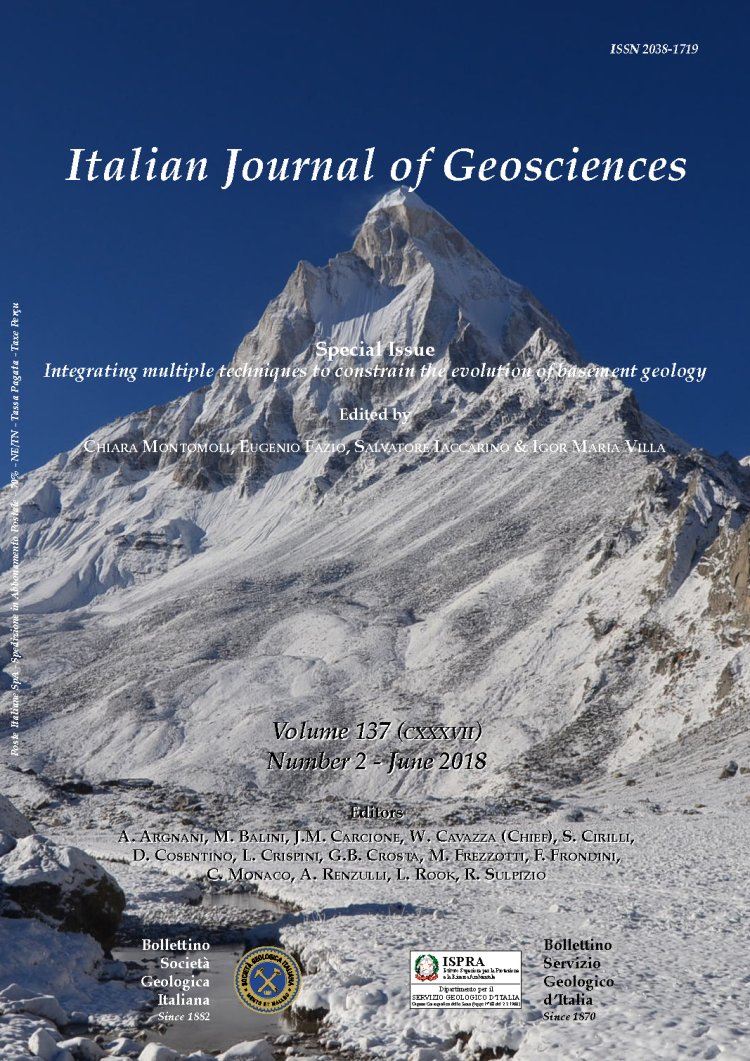
Tectonometamorphic evolution of the Lago della Vecchia metaintrusive and its country rocks, Sesia-Lanzo Zone, Western Alps
Luca Corti (1), Gioele Alberelli (1), Davide Zanoni (1) & Michele Zucali (1)
(1) Dipartimento di Scienze della Terra “Ardito Desio”, Università degli Studi di Milano, Italy, Via Mangiagalli 34 - 20133 Milano.
Corresponding author e-mail: luca.corti@unimi.it
Volume: 137 (2018) f.2
Pages: 188-207
Abstract
In the Sesia-Lanzo Zone different complexes are separated on the basis of rock types and dominant metamorphic imprints: one of these is the Eclogitic Micaschists Complex (EMC) that is distinguished by a dominant Alpine eclogite facies fabric. In this contribution, we present the results of a multiscale structural analysis devoted
to reconstruct the tectonometamorphic evolution of the Lago della Vecchia metaintrusive and its country rocks (upper Cervo valley, Biella), which are part of the EMC. Seven groups of superposed structures have been detected. Igneous pre-Alpine M0 relicts are preserved in metaintrusive. Alpine structures consist of: S1 foliation (D1) developed under eclogite facies conditions; S2 foliation (D2) is the most pervasive fabric and developed under low-pressure blueschist facies conditions; localised shear zones and open folds (D3 and D4) are associated with the development of greenschist facies assemblages; a kilometre-long shear zones (D5) developed under greenschist facies conditions. Finally, andesitic dikes intrusion postdates D1-D5 structures. On the basis of deformation-metamorphism relationships geothermobarometric estimates were performed to constrain the
PT conditions characterising subsequent deformation stages. The resulting Pressure-Temperature-relative time of deformation (P-Td-t) path shows a pre-Alpine magmatic emplacement at around 15 km depth at T=710±19°C that is followed by re-equilibration indicating the conditions of the Alpine eclogitic peak (D1: 2.23±0.18
GPa; 537±43°C), compatible with a cold-subduction environment. A near-isothermal exhumation postdates D1, down to 1.12±0.11 GPa at 477±39°C during D2 deformation stage. Afterwards, temperature and pressure decreased from D2 low-pressure blueschist to D3-D4 greenschist re-equilibrations (P=0.6±0.10 GPa and T=302±24°C). In contrast with the most part of the EMC, where the dominant fabric
developed under eclogitic facies conditions, at Lago della Vecchia the dominant fabric developed under low-pressure blueschist facies conditions. This difference suggests that the entire EMC should be characterised by kilometre-scale structural heterogeneities in the dominant tectonometamorphic record.
Keywords
multiscale structural analysis, blueschist-facies imprint, strain partitioning, metamorphic conditions, Eclogitic Micaschists Complex.
Get Full Text Supplementary Material